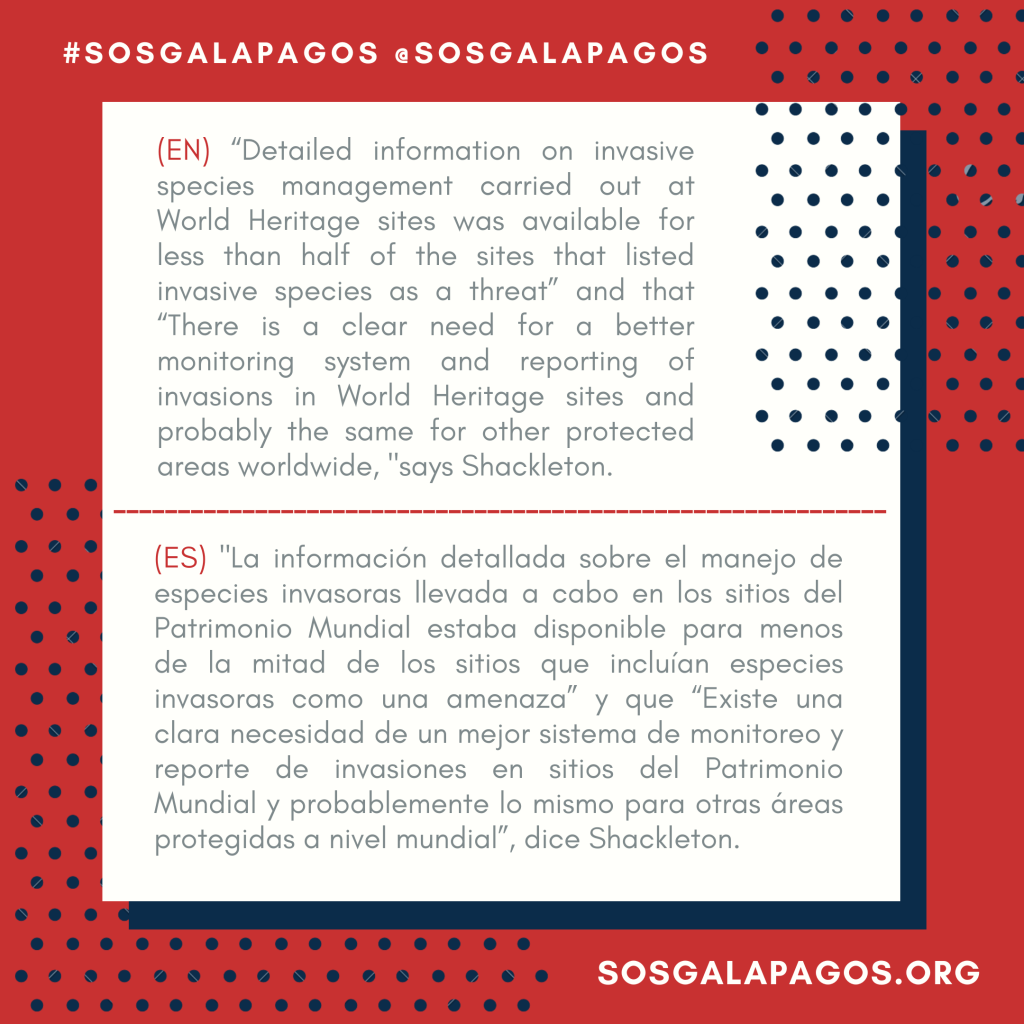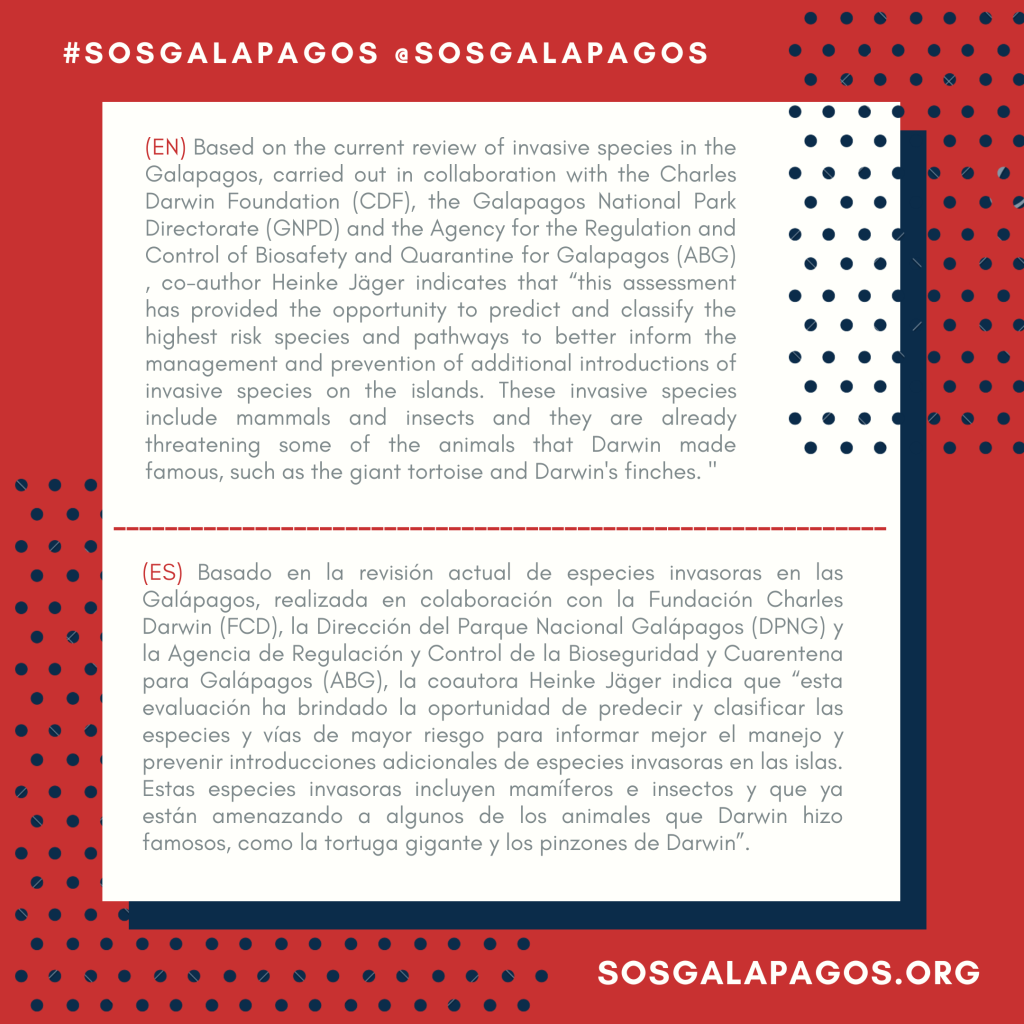New monitoring and reporting framework designed to ‘better protect’ World Heritage sites like Galapagos from invasive species
Bainbridge Isolte, in the Galapagos Islands, had been invaded by rats and ants in the past. Photo: Heinke Jager / CDF
September 22, 2020 – 3:27 pm
A new monitoring and reporting framework to help protect World Heritage sites, such as Galapagos, from nearly 300 different invasive species globally was designed by a team of international scientists.
Unesco World Heritage sites are areas of outstanding universal value and importance for conservation.
However, they are threatened by a variety of drivers of global change, including biological invasions from different introduced terrestrial, freshwater and marine species.
Lead author Ross Shackleton worked with invasive species experts from around the world, who suggested that the new “tool” could help protect World Heritage sites like the Galapagos, Serengeti and Aldabra Atoll from future threats.
The team, which evaluated biological invasions and their management in 241 World Heritage sites, natural and mixed, from documents compiled by Unesco and the International Union for Conservation of Nature (IUCN), found that reports on the state of these were often data deficient.
The research, published in Biodiversity and Conservation, highlighted that while some reports were “very informative,” scientists say they were difficult to compare because no systematic method of reporting was followed.
“Detailed information on invasive species management carried out at World Heritage sites was available for less than half of the sites that listed invasive species as a threat” and that “There is a clear need for a better monitoring system and reporting of invasions in World Heritage sites and probably the same for other protected areas worldwide, “says Shackleton.
The new framework devised by the scientists, which has been tested at seven World Heritage sites, encompasses information gathering and reporting; pathways of introduction, introduced species present, impacts, management, prediction of future threats and management needs, state of knowledge and gaps, and assignment of an overall “threat score” to the protected area.
Based on the current review of invasive species in the Galapagos, carried out in collaboration with the Charles Darwin Foundation (CDF), the Galapagos National Park Directorate (GNPD) and the Agency for the Regulation and Control of Biosafety and Quarantine for Galapagos (ABG) , co-author Heinke Jäger indicates that “this assessment has provided the opportunity to predict and classify the highest risk species and pathways to better inform the management and prevention of additional introductions of invasive species on the islands. These invasive species include mammals and insects and they are already threatening some of the animals that Darwin made famous, such as the giant tortoise and Darwin’s finches. “
Read the entire coverage from El Universo at bit.ly/0922universo or https://www.eluniverso.com/noticias/2020/09/22/nota/7986898/disenan-nuevo-marco-seguimiento-presentacion-informes-proteger
Informing and sharing news on marine life, flora, fauna and conservation in the Galápagos Islands since 2017
© SOS Galápagos, 2021







